
Discover the Charm of Žaliakalnis in Kaunas, Lithuania
Žaliakalnis in Kaunas: A blend of historical charm, natural beauty, and cultural richness, perfect for a tranquil yet enriching tourist experience.
Žaliakalnis, meaning 'Green Hill,' is one of the oldest and most picturesque neighborhoods in Kaunas, Lithuania. Nestled on a hill overlooking the city, Žaliakalnis offers a blend of historical charm and natural beauty, making it a perfect destination for tourists seeking a tranquil yet enriching experience. The neighborhood is renowned for its early 20th-century wooden houses, each telling a story of the past. As you stroll through the tree-lined streets, you'll encounter architectural marvels that showcase the rich cultural heritage of the area. Don't miss the Kaunas Christ's Resurrection Basilica, an impressive modernist structure offering panoramic views of the city from its observation deck. Nature lovers will find solace in the lush greenery that Žaliakalnis has to offer. The neighborhood is home to several parks and green spaces, perfect for a leisurely walk or a peaceful picnic. The nearby Ąžuolynas Park, one of the largest urban oak groves in Europe, is a haven for those looking to escape the hustle and bustle of city life. For art and history enthusiasts, Žaliakalnis doesn't disappoint. The M. K. Čiurlionis National Art Museum, dedicated to Lithuania's most famous painter and composer, provides a deep dive into the country's artistic heritage. Additionally, the Sugihara House offers a poignant look into the life of the Japanese diplomat who saved thousands of Jewish refugees during World War II.
Local tips in Žaliakalnis
- Wear comfortable shoes; the hilly terrain requires a bit of walking.
- Visit the observation deck of Kaunas Christ's Resurrection Basilica for breathtaking city views.
- Plan a picnic at Ąžuolynas Park to enjoy the serene natural surroundings.
- Check the opening hours of the M. K. Čiurlionis National Art Museum to make the most of your visit.
- Don't miss the chance to visit Sugihara House for a moving historical experience.
Discover the Charm of Žaliakalnis in Kaunas, Lithuania
Žaliakalnis, meaning 'Green Hill,' is one of the oldest and most picturesque neighborhoods in Kaunas, Lithuania. Nestled on a hill overlooking the city, Žaliakalnis offers a blend of historical charm and natural beauty, making it a perfect destination for tourists seeking a tranquil yet enriching experience. The neighborhood is renowned for its early 20th-century wooden houses, each telling a story of the past. As you stroll through the tree-lined streets, you'll encounter architectural marvels that showcase the rich cultural heritage of the area. Don't miss the Kaunas Christ's Resurrection Basilica, an impressive modernist structure offering panoramic views of the city from its observation deck. Nature lovers will find solace in the lush greenery that Žaliakalnis has to offer. The neighborhood is home to several parks and green spaces, perfect for a leisurely walk or a peaceful picnic. The nearby Ąžuolynas Park, one of the largest urban oak groves in Europe, is a haven for those looking to escape the hustle and bustle of city life. For art and history enthusiasts, Žaliakalnis doesn't disappoint. The M. K. Čiurlionis National Art Museum, dedicated to Lithuania's most famous painter and composer, provides a deep dive into the country's artistic heritage. Additionally, the Sugihara House offers a poignant look into the life of the Japanese diplomat who saved thousands of Jewish refugees during World War II.
Iconic landmarks you can’t miss
Oak-Wood Park
Explore Oak-Wood Park in Kaunas: A lush sanctuary for relaxation, picnics, and nature walks, perfect for tourists seeking tranquility in the city.

Devils' Museum
Discover the fascinating world of folklore at the Devils' Museum in Kaunas, showcasing a unique collection of devil-themed artifacts from around the globe.

Historical Presidential Palace, Kaunas
Explore the Historical Presidential Palace in Kaunas – a captivating museum showcasing Lithuania's rich political history and stunning architecture.

Kaukas stairs
Explore the breathtaking Kaukas Stairs in Kaunas, where stunning views meet rich history in the heart of Lithuania's charming city.

Lithuanian officers palace
Explore the elegant Lithuanian Officers Palace in Kaunas, a historic landmark showcasing military heritage, stunning architecture, and cultural events.

George Maciunas Square
Explore the artistic spirit of Kaunas at George Maciunas Square, a vibrant cultural hub adorned with unique sculptures and rich history.

Freedom Monument (Kaunas)
Explore the Freedom Monument in Kaunas, a historic landmark celebrating Lithuania's independence and resilience amidst rich cultural surroundings.

Kauno akcentai - Tauras
Explore the historical allure of Kauno akcentai - Tauras, a stunning landmark in Kaunas, Lithuania, that showcases rich heritage and architectural beauty.

The Fight
Explore 'The Fight' in Kaunas, a powerful monument of resilience and hope reflecting the city's rich history and culture.
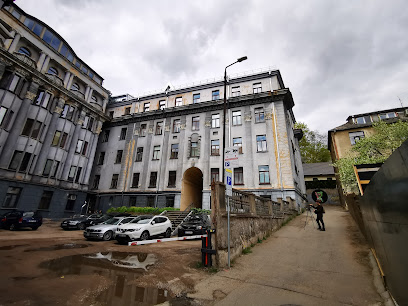
Santakėlė
Explore the natural beauty and serene landscapes of Santakėlė, a picturesque tourist attraction at the confluence of the Neris and Nemunas rivers in Kaunas, Lithuania.

Unmissable attractions to see
Vytautas the Great War Museum
Explore the rich military heritage of Lithuania at Vytautas the Great War Museum, a captivating destination in Kaunas for history enthusiasts.

Kaunas Tadas Ivanauskas Museum of Zoology
Discover the fascinating world of zoology at the Kaunas Tadas Ivanauskas Museum, featuring diverse exhibits and educational insights into wildlife conservation.

M.K. Čiurlionis Museum of Art
Discover the enchanting M.K. Čiurlionis Museum of Art in Kaunas, showcasing the brilliance of Lithuania's artistic legacy through captivating art and music.
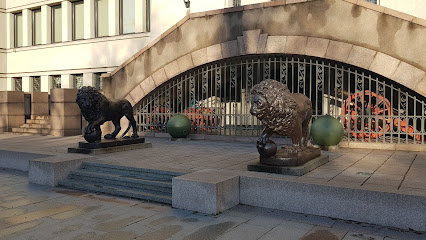
Historical Presidential Palace, Kaunas
Uncover the rich history of Lithuania at the Historical Presidential Palace in Kaunas, a remarkable museum of interwar heritage and architectural beauty.

Kauno serpantinas
Experience the serene beauty of Kauno Serpantinas, a picturesque attraction in Kaunas, Lithuania, perfect for nature lovers and cultural explorers.

Suoliukai
Explore the natural beauty and cultural richness of Suoliukai, a must-visit tourist attraction in the heart of Kaunas, Lithuania.
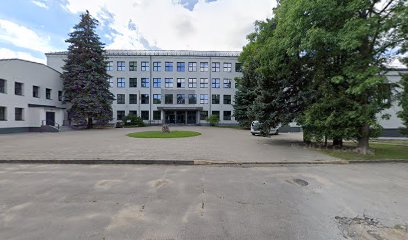
Sculpture
Explore the captivating Sculpture in Kaunas, where art meets culture in a stunning outdoor setting, perfect for every art lover and traveler.

Essential places to dine
Floros simfonija
Discover the culinary artistry of Floros Simfonija in Kaunas—where tradition meets innovation in every bite.

Bernelių užeiga Smuklė
Discover the heart of Lithuanian cuisine at Bernelių užeiga Smuklė in Kaunas – a culinary gem serving authentic dishes in a charming atmosphere.

DIA
Experience exquisite Lithuanian cuisine at DIA in Kaunas – where tradition meets modern elegance.

Piccola Italia - neapolitan pizzeria
Discover authentic Neapolitan pizza at Piccola Italia in Kaunas - where every bite takes you straight to Italy!
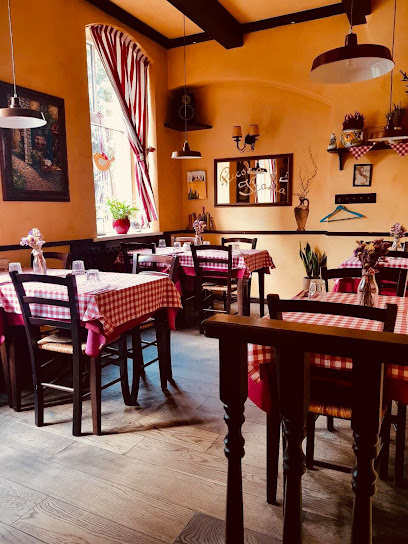
KUHNE
Discover authentic Lithuanian cuisine at KUHNE in Kaunas—a culinary hotspot blending tradition with modern flair.

Uoksas
Discover culinary excellence at Uoksas in Kaunas—where tradition meets innovation in every dish.

Donelaičio
Experience authentic Lithuanian flavors at Donelaičio Restaurant in Kaunas - where culinary tradition meets modern elegance.

55°
Experience authentic Lithuanian cuisine at 55°, where local flavors meet modern dining in the heart of Kaunas.

Two Senses
Discover authentic Lithuanian cuisine at Two Senses, where modern ambiance meets traditional flavors in the heart of Kaunas.

Žaliakalnis. Kaunas
Explore Žaliakalnis: A Culinary Gem in Kaunas with Diverse Asian Flavors Awaiting You.

Markets, malls and hidden boutiques
IKI - ŽALIAKALNIS
Discover local flavors and fresh produce at IKI - ŽALIAKALNIS, a must-visit grocery store in Kaunas, Lithuania.

kARTu
Explore kARTu in Kaunas - a charming gift shop offering unique handmade items and stylish bags, perfect for souvenirs and gifts.

LaisvalaikioDovanos.lt Store | Hyper Maxima
Explore the charm of Lithuania with unique gifts at LaisvalaikioDovanos.lt Store in Kaunas, perfect for souvenirs and local treasures.

Giftstory.lt
Explore Giftstory.lt in Kaunas for unique, locally sourced gifts that capture the essence of Lithuania's cultural charm.

Meno Materija Shop
Discover Meno Materija Shop in Kaunas: your go-to place for unique Lithuanian gifts and handcrafted treasures that celebrate local artistry.

Dovanos - Suvenyrai, parduotuvė
Discover Dovanos in Kaunas: A treasure trove of unique gifts, handcrafted jewelry, and local artistry that captures the essence of Lithuania.

Stilo
Explore unique fashion at Stilo, a stylish clothing store in the heart of Kaunas, offering a blend of contemporary and local designs.

UAB Meno rinka
Explore the vibrant UAB Meno rinka in Kaunas for unique gifts, antiques, and a taste of Lithuanian culture.

HappyKidsWear
Discover HappyKidsWear, your go-to destination for stylish and comfortable children's clothing, perfect for any occasion while you explore!

Kaunas
Explore Kaunas: A Cultural Gem in Lithuania with Stunning Architecture, Rich History, and Vibrant Art Scene.

Essential bars & hidden hideouts
rePUBlic No.1
Discover the best sports bar in Kaunas, offering a lively atmosphere, delicious pub food, and an impressive drink selection for every sports enthusiast.

Džem'pub
Discover the vibrant nightlife of Kaunas at Džem'pub, where great drinks, live music, and stunning city views await you.

Vingiu Dubingiu Aludė
Experience the vibrant atmosphere of Vingiu Dubingiu Aludė, Kaunas's premier beer hall, where local brews and traditional dishes come together.

Rocknrolla bar&kitchen
Experience the vibrant atmosphere of Rocknrolla Bar & Kitchen in Kaunas, where delicious grilled dishes meet exciting nightlife.

Rebels
Experience the vibrant nightlife of Kaunas at Rebels, where culinary delights and an extensive drink menu meet a lively atmosphere.
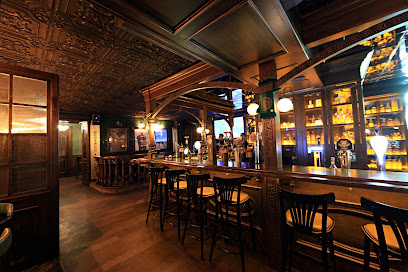
Hogas Pub
Indulge in delicious grilled dishes and vibrant atmosphere at Hogas Pub, the perfect dining spot in Kaunas for food lovers and tourists alike.

Biergarten baras KIEMAS
Discover the vibrant Biergarten baras KIEMAS in Kaunas, a perfect spot for enjoying local brews and a lively atmosphere.

JazzBar
Experience the rhythm of Kaunas at JazzBar, where live jazz meets exquisite cocktails in a vibrant atmosphere.

Smuklė
Discover the lively ambiance and local flavors at Smuklė Pub, a vibrant hotspot in the heart of Kaunas, Lithuania.

Runas Lounge
Experience exquisite cocktails and vibrant nightlife at Runas Lounge, Kaunas' premier cocktail bar and dance club for unforgettable evenings.

Local Phrases
-
- HelloLabas
[lah-bahs] - GoodbyeViso gero
[vee-soh geh-roh] - YesTaip
[taip] - NoNe
[neh] - Please/You're welcomePrašom
[prah-sawm] - Thank youAčiū
[ah-choo] - Excuse me/SorryAtsiprašau
[aht-see-prah-sow] - How are you?Kaip tu?
[kaip too] - Fine. And you?Gerai. O tu?
[geh-rye. oh too] - Do you speak English?Ar kalbate anglų kalba?
[ahr kahl-bah-teh ahng-loo kahl-bah] - I don't understandAš nesuprantu
[ahsh neh-soo-prahn-too]
- HelloLabas
-
- I'd like to see the menu, pleaseNorėčiau pamatyti meniu, prašau
[noh-reh-chow pah-mah-tee-tee meh-nee-oo, prah-saw] - I don't eat meatAš nevalgau mėsos
[ahsh neh-vahl-gow meh-sohs] - Cheers!Į sveikatą!
[ee svee-kah-tah] - I would like to pay, pleaseNorėčiau sumokėti, prašau
[noh-reh-chow soo-moh-kay-tee, prah-saw]
- I'd like to see the menu, pleaseNorėčiau pamatyti meniu, prašau
-
- Help!Pagalba!
[pah-gahl-bah] - Go away!Išeik!
[ee-sheh-eek] - Call the Police!Paskambinkite policijai!
[pah-skahm-been-kee-teh poh-lee-tsee-yai] - Call a doctor!Paskambinkite gydytojui!
[pah-skahm-been-kee-teh gih-dih-toh-yoo-ee] - I'm lostAš pasiklydau
[ahsh pah-see-kloo-dow] - I'm illAš sergu
[ahsh sehr-goo]
- Help!Pagalba!
-
- I'd like to buy...Norėčiau pirkti...
[noh-reh-chow peerk-tee] - I'm just lookingTik žiūrėti
[teek zhyoo-reh-tee] - How much is it?Kiek tai kainuoja?
[kyek tai kai-noo-yah] - That's too expensiveTai per brangu
[tai pehr brahn-goo] - Can you lower the price?Ar galite nuleisti kainą?
[ahr gah-lee-teh noo-lay-stee kai-nah]
- I'd like to buy...Norėčiau pirkti...
-
- What time is it?Kiek valandų?
[kyek vah-lahn-doo] - It's one o'clockViena valanda
[vyeh-nah vah-lahn-dah] - Half past (10)Dešimt valandų pusė
[deh-shimt vah-lahn-doo poo-seh] - MorningRytas
[rih-tahs] - AfternoonPopietė
[poh-pyeh-teh] - EveningVakaras
[vah-kah-rahs] - YesterdayVakar
[vah-kahr] - TodayŠiandien
[shyahn-dyehn] - TomorrowRytoj
[rih-toy] - 1Vienas
[vyeh-nahs] - 2Du
[doo] - 3Trys
[treese] - 4Keturi
[keh-too-ree] - 5Penki
[pehn-kee] - 6Šeši
[sheh-shee] - 7Septyni
[sehp-tih-nee] - 8Aštuoni
[ahs-too-oh-nee] - 9Devyni
[deh-vih-nee] - 10Dešimt
[deh-shimt]
- What time is it?Kiek valandų?
-
- Where's a/the...?Kur yra...?
[koor yrah] - What's the address?Koks adresas?
[kohks ah-dreh-sahs] - Can you show me (on the map)?Ar galite man parodyti (žemėlapyje)?
[ahr gah-lee-teh mahn pah-roh-duh-tee zheh-meh-lah-pih-yeah] - When's the next (bus)?Kada kitas (autobusas)?
[kah-dah kee-tahs ow-toh-boo-sahs] - A ticket (to ....)Bilietas (į ....)
[bee-lyeh-tahs ee]
- Where's a/the...?Kur yra...?
History of Žaliakalnis
-
Žaliakalnis, which translates to 'Green Hill', began its transformation in the late 19th century when it became a prominent residential area for the growing middle class of Kaunas. The establishment of transportation links, including the construction of the Kaunas tramway in 1900, facilitated the influx of residents and contributed to the urban sprawl of the city.
-
During the interwar period (1918-1940), Žaliakalnis experienced significant architectural development, characterized by the construction of modernist buildings. This era saw the rise of notable architects, such as Vladimiras Dubeneckis and Jurgis Šeibokas, who designed many of the area’s iconic structures, including the distinctive functionalist homes and public buildings that now define the neighborhood's aesthetic.
-
One of the most significant landmarks in Žaliakalnis is the Church of the Resurrection of Christ, a monumental structure completed in 1932. Designed by architects Karolis Reisonas and Vytautas Landsbergis-Žemkalnis, the church stands as a symbol of Lithuanian national revival and religious identity during a time of political turmoil and change in the region.
-
Following World War II, Žaliakalnis, like much of Kaunas, underwent a series of transformations under Soviet rule. Many buildings were repurposed for state use, and new apartment blocks were constructed to accommodate the growing population. The Soviet regime's influence is still evident in the architecture of the period, which contrasts with the earlier styles found in the neighborhood.
-
After Lithuania regained independence in 1990, Žaliakalnis experienced a cultural revival. The neighborhood has become a hub for artistic expression, with numerous galleries, studios, and cultural events taking place. The preservation and restoration of historical buildings have also played a vital role in this renaissance, attracting both locals and tourists to explore its rich heritage.
Žaliakalnis Essentials
-
Žaliakalnis is conveniently located just a short distance from the city center of Kaunas. From Kaunas Airport, you can take a taxi or use a ride-sharing service which typically takes around 30 minutes. If you are coming from the city center, the easiest option is to take public transport. Bus lines 5, 8, and 16 connect the city center to Žaliakalnis, and the journey lasts approximately 15-20 minutes.
-
Žaliakalnis is well-connected by public transport, with several bus routes operating throughout the neighborhood. Biking is also a popular option, with bike-sharing services available for rent. The area is pedestrian-friendly, making it easy to explore on foot. The funicular railway connecting Žaliakalnis to the city center offers a unique way to travel, providing both transportation and a scenic view.
-
Žaliakalnis is generally considered a safe neighborhood for tourists. However, as in any urban area, it is wise to remain vigilant, especially at night. Avoid poorly lit areas and keep your valuables secure. There are no specific high-crime areas targeting tourists, but it is advisable to stay alert in crowded tourist spots.
-
In case of an emergency, dial 112 for police, ambulance, or fire services. The local hospital is located in the city center, and there are several pharmacies in Žaliakalnis for minor health needs. It is advisable to have travel insurance that covers medical emergencies. Keep emergency numbers handy and know the location of the nearest hospital.
-
Fashion: Do dress comfortably for walking but avoid overly casual attire when visiting religious sites. Don't wear beachwear outside of the beach areas. Religion: Do respect local customs, particularly in churches; modest clothing is encouraged. Public Transport: Do offer your seat to elderly or disabled passengers. Don't eat or drink on public transport. Greetings: Do greet locals with a smile and a friendly 'Labas' (Hello). Don't be overly formal; a simple handshake is sufficient. Eating & Drinking: Do try local dishes at nearby cafes. Don't waste food or refuse offerings, as it can be seen as impolite.
-
To experience Žaliakalnis like a local, explore the neighborhood's parks and green spaces, such as the beautiful Žaliakalnis Park. Visit local cafes for traditional Lithuanian pastries, and don’t miss the iconic Žaliakalnis Funicular, which offers stunning views of Kaunas. Engage in conversations with locals, who are often eager to share their stories and insights about the area. Look out for community events or markets that may be taking place during your visit.
Nearby Cities to Žaliakalnis
-
Things To Do in Jonava
-
Things To Do in Marijampolė
-
Things To Do in Vilnius
-
Things To Do in Panevėžys
-
Things To Do in Suwalki
-
Things To Do in Šiauliai
-
Things To Do in Utena
-
Things To Do in Klaipėda
-
Things To Do in Daugavpils
-
Things To Do in Bialystok
-
Things To Do in Jurmala
-
Things To Do in Riga
-
Things To Do in Liepaja
-
Things To Do in Olsztyn
-
Things To Do in Sigulda







